Sexual Jealousy (1984-93) is a wide-ranging, collaborative, multi-part project that initially took the form of one of Rapoport’s most physical and cathartic performances.
In 1984, working with Dr. Ayala Pines, Professor of Psychology at UC Berkeley and author of “Romantic Jealousy,” Rapoport presented the Coping with Sexual Jealousy participation performance at the Pauley Ballroom, sponsored by Heller Gallery.
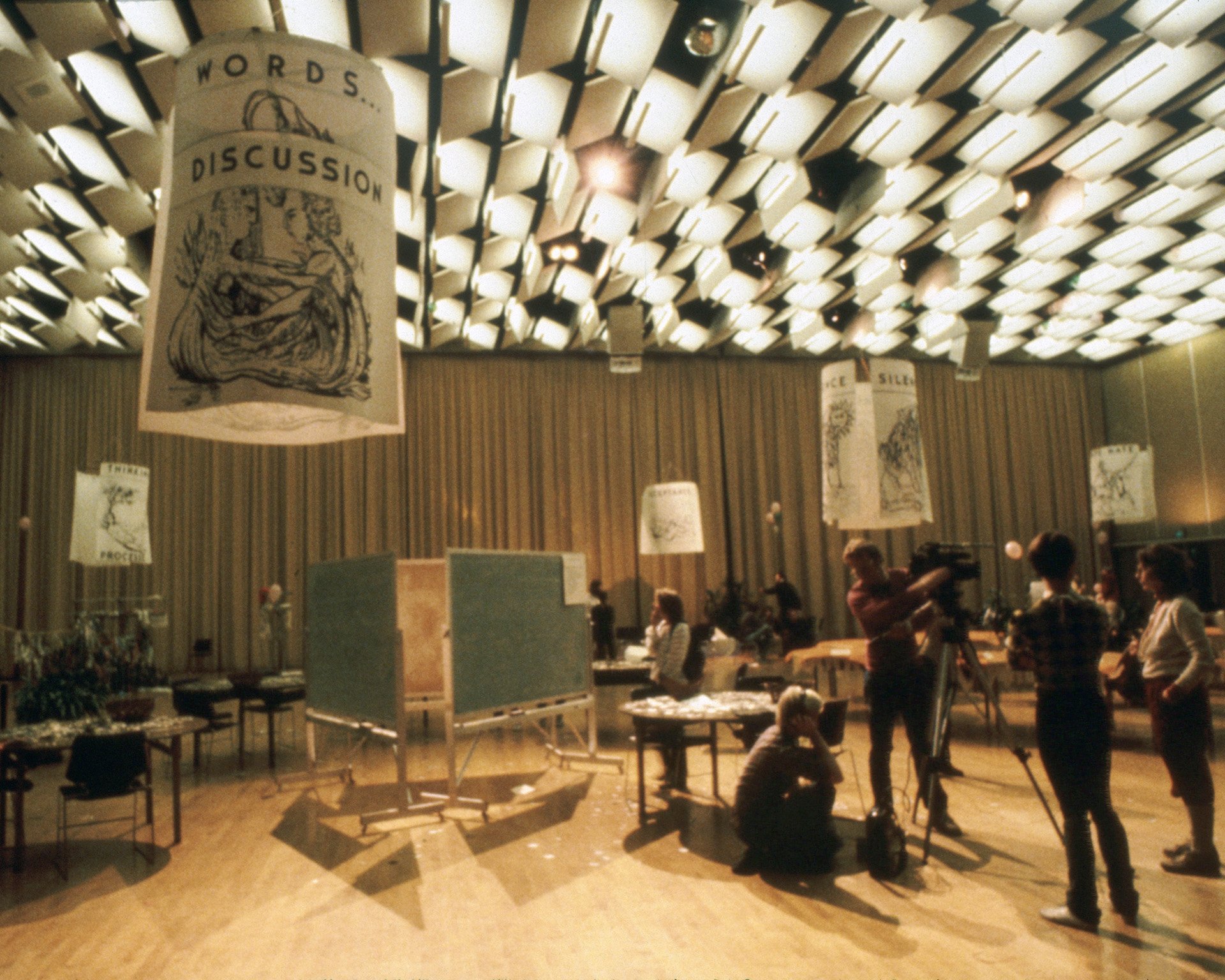
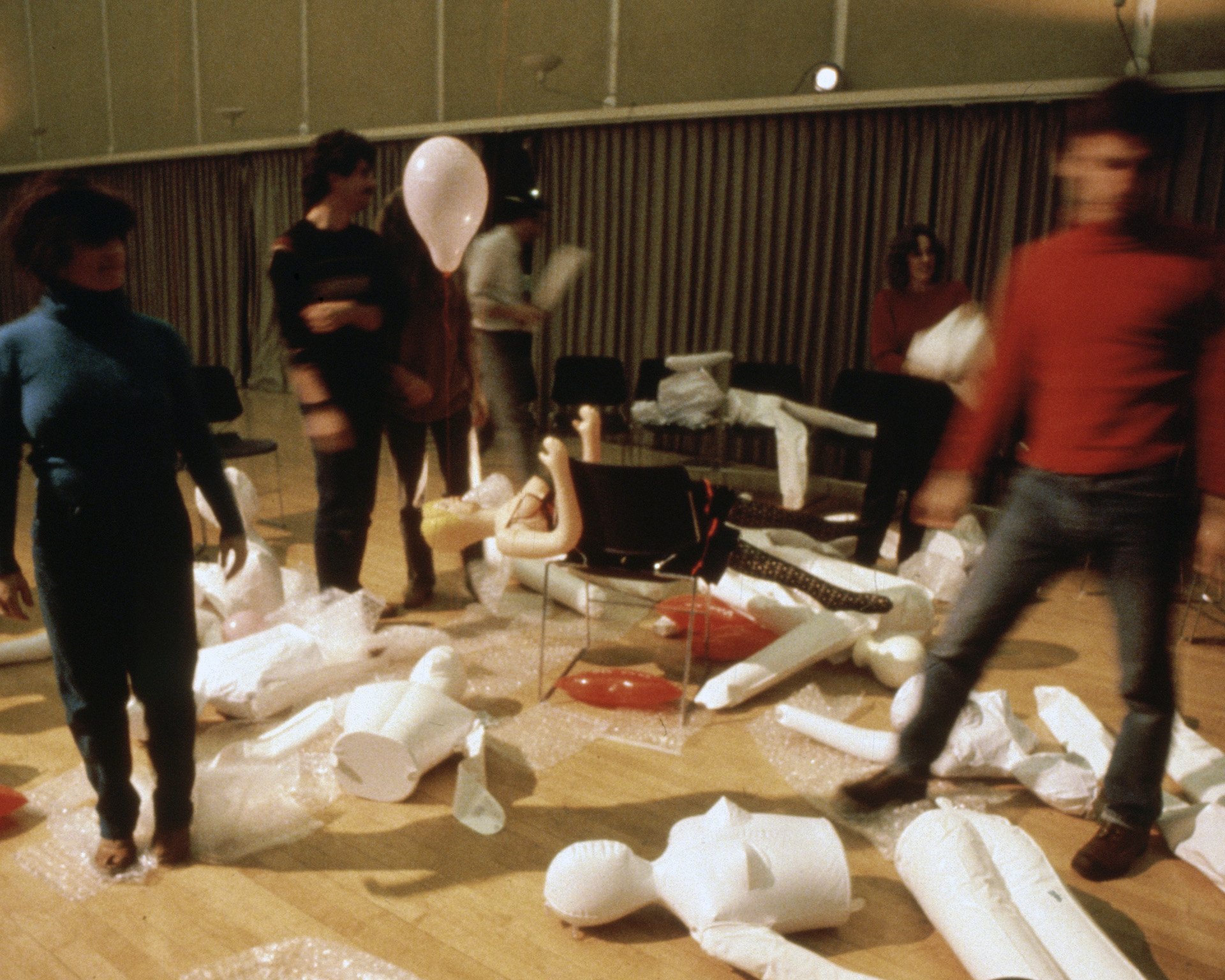
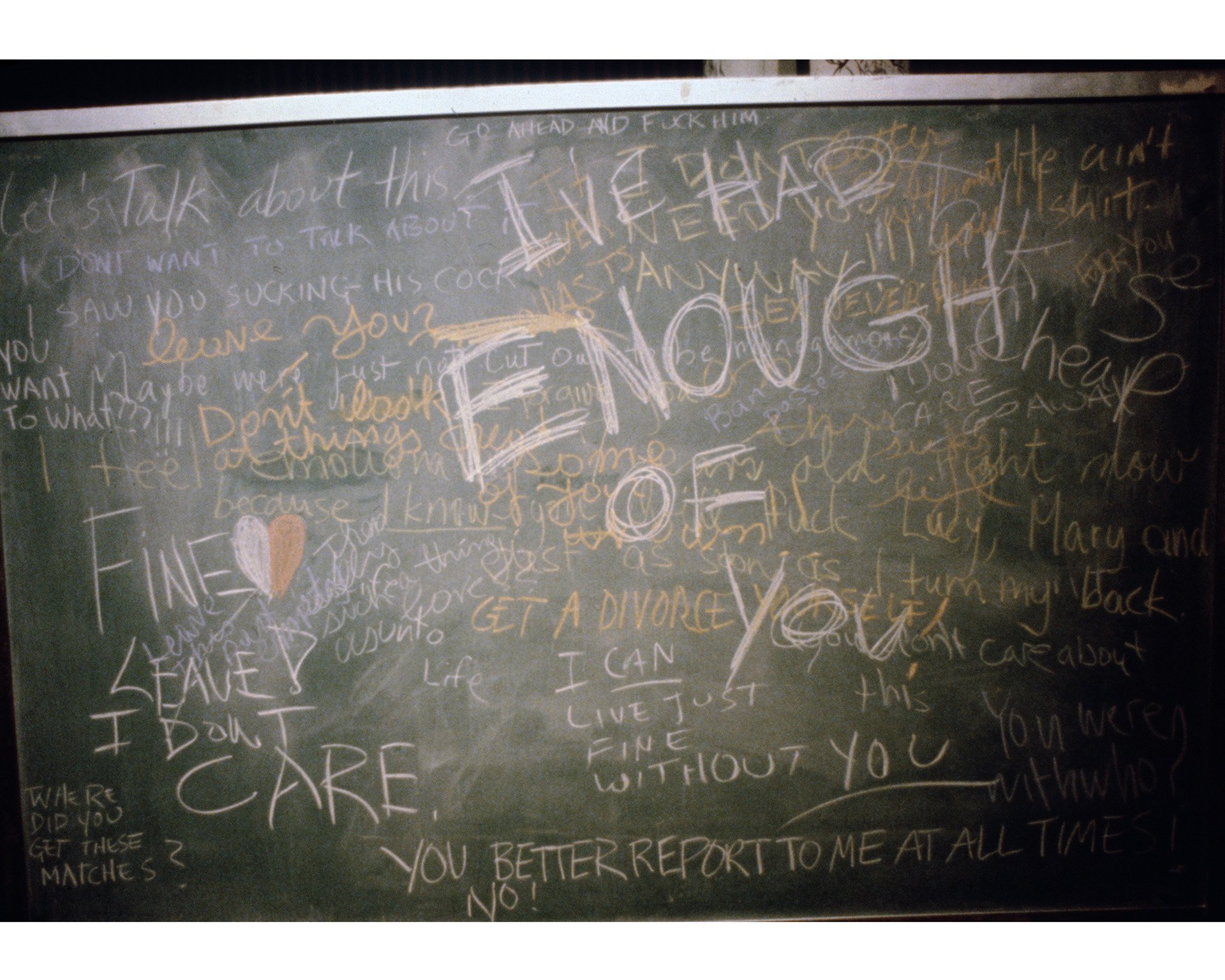

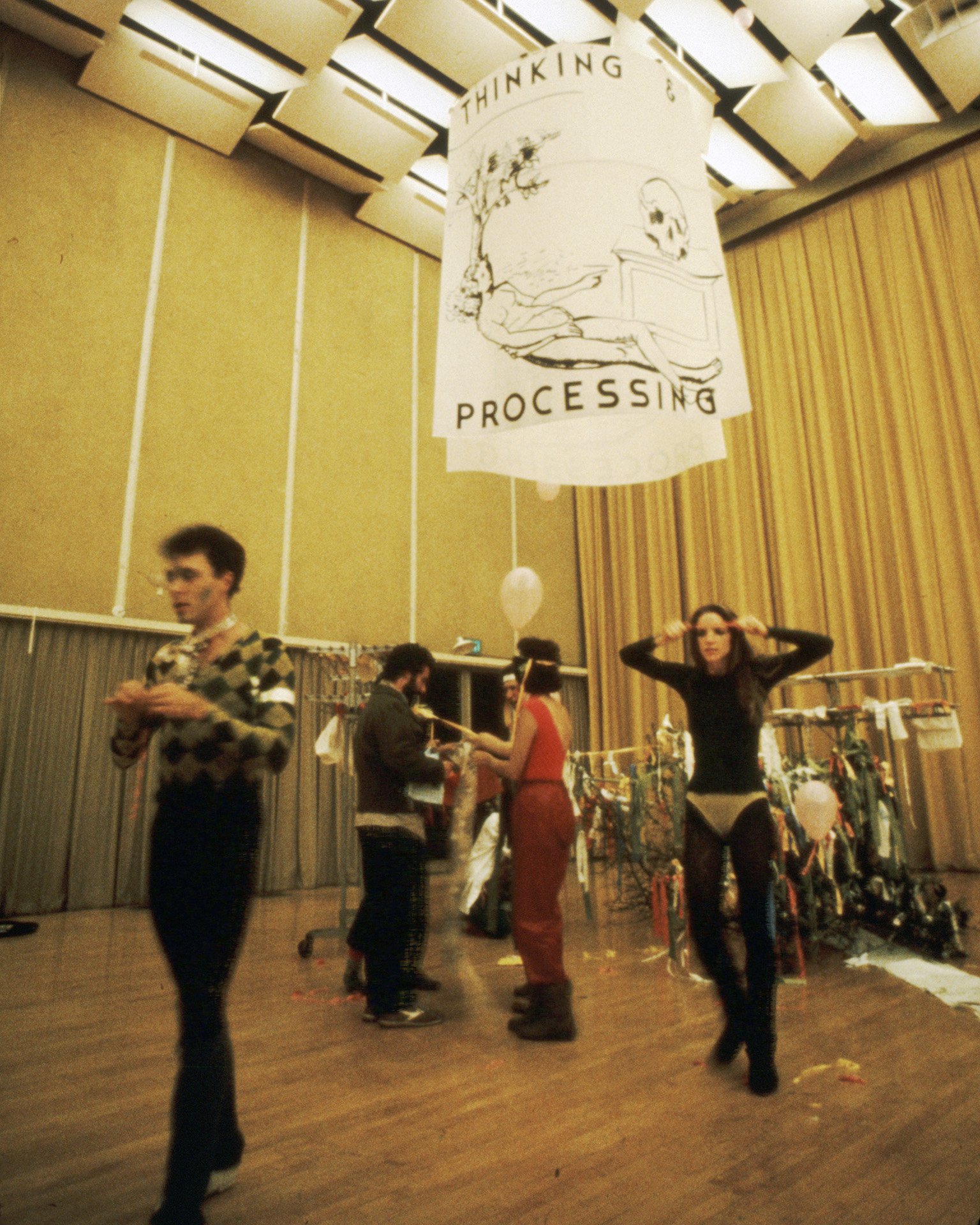
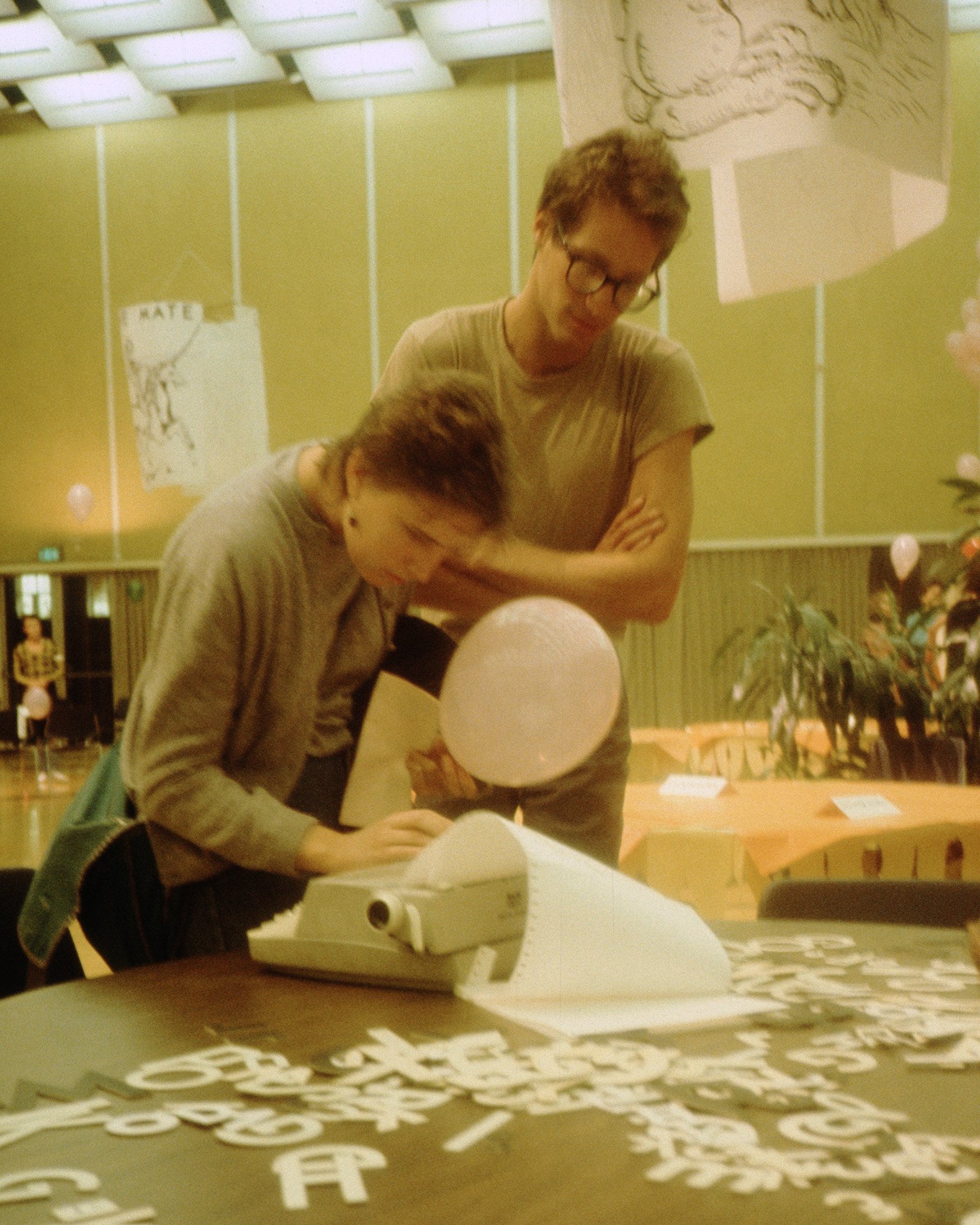
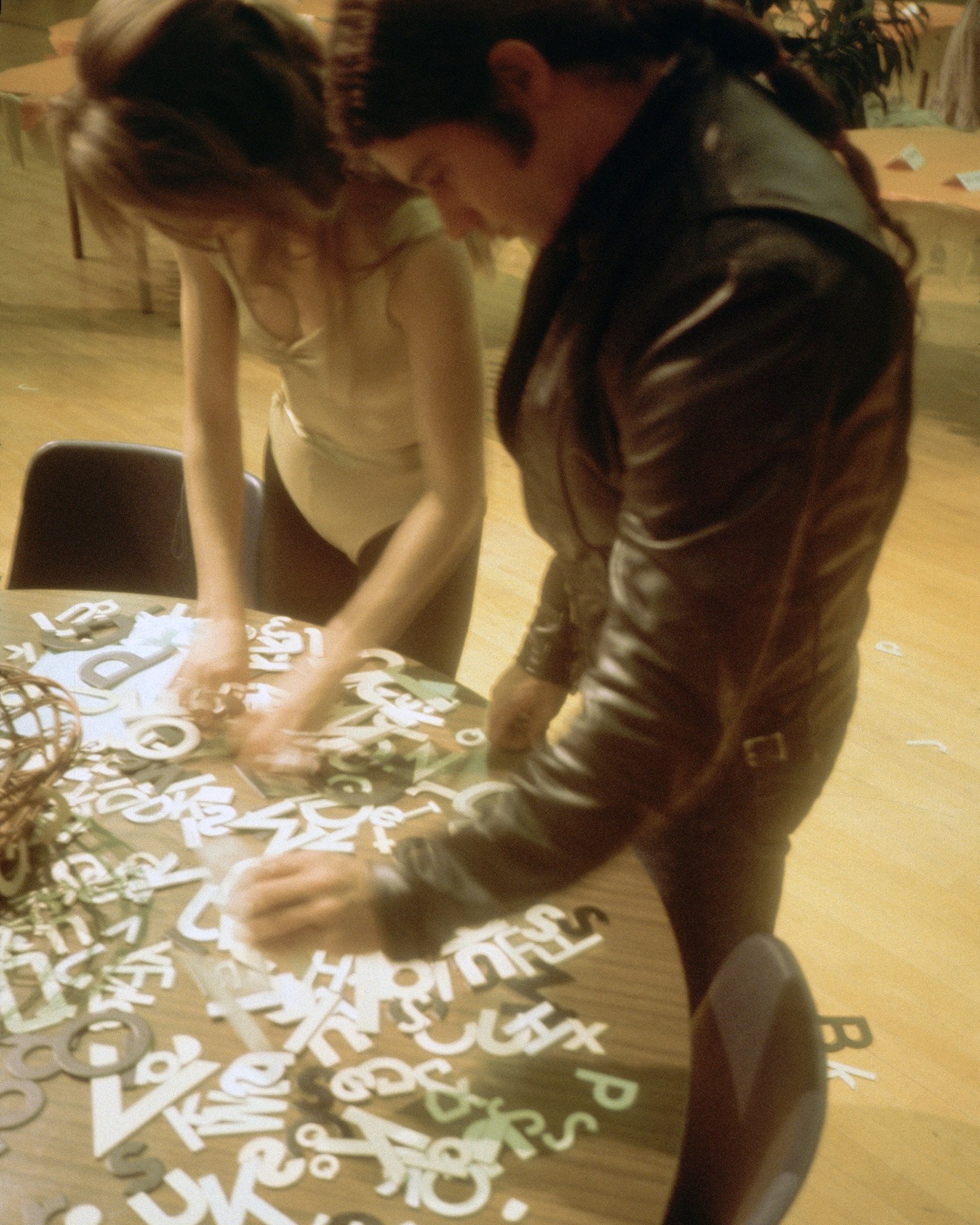
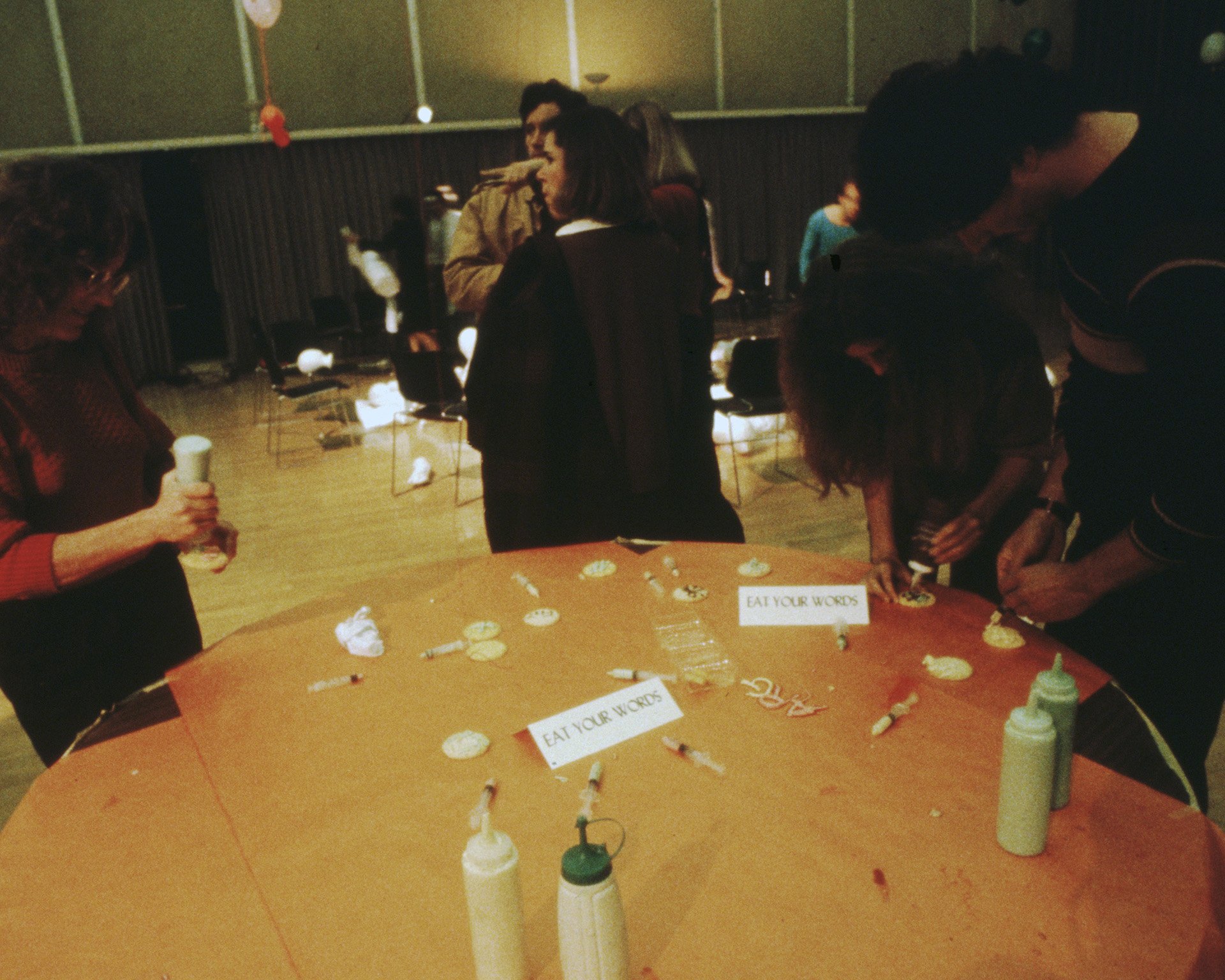
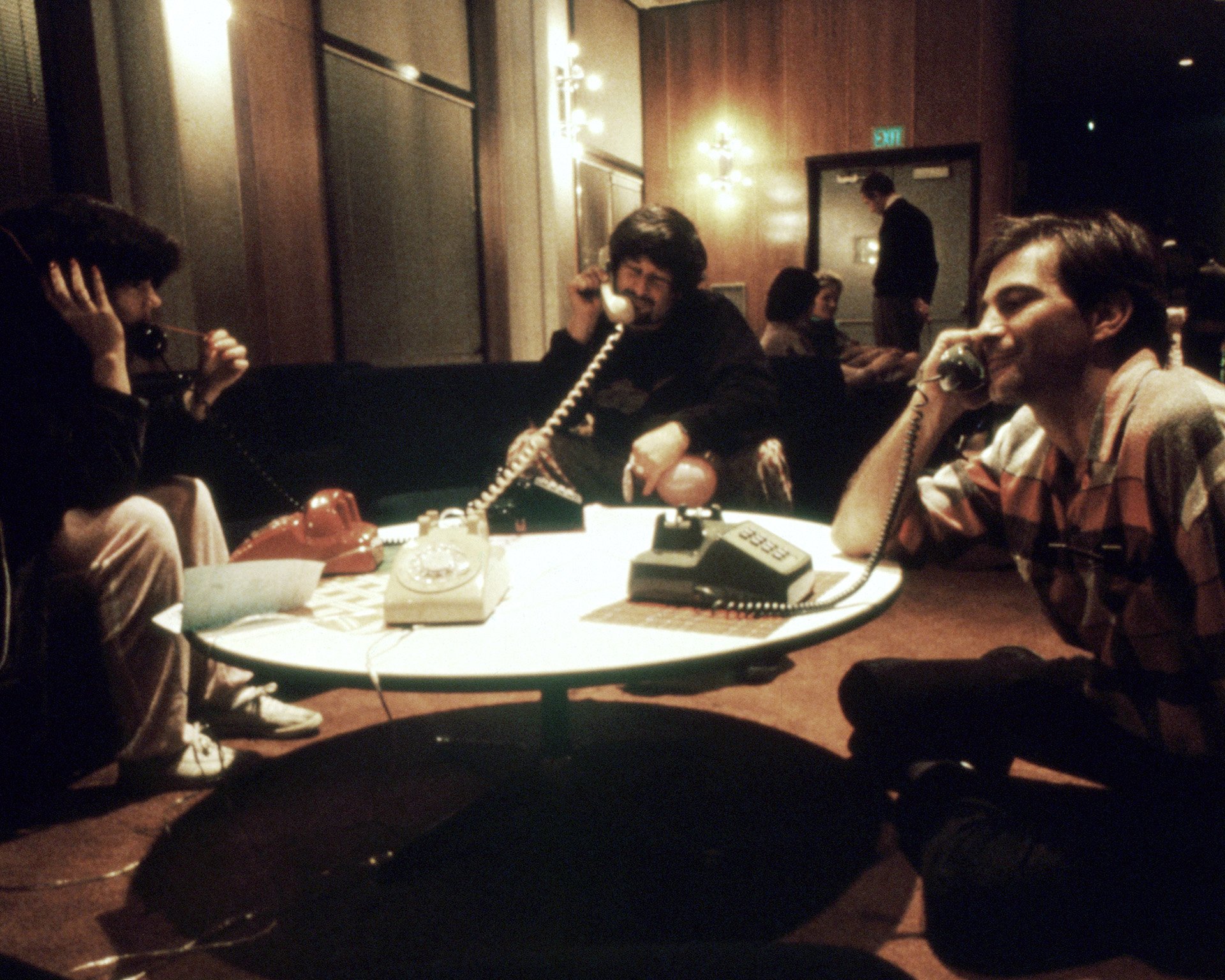
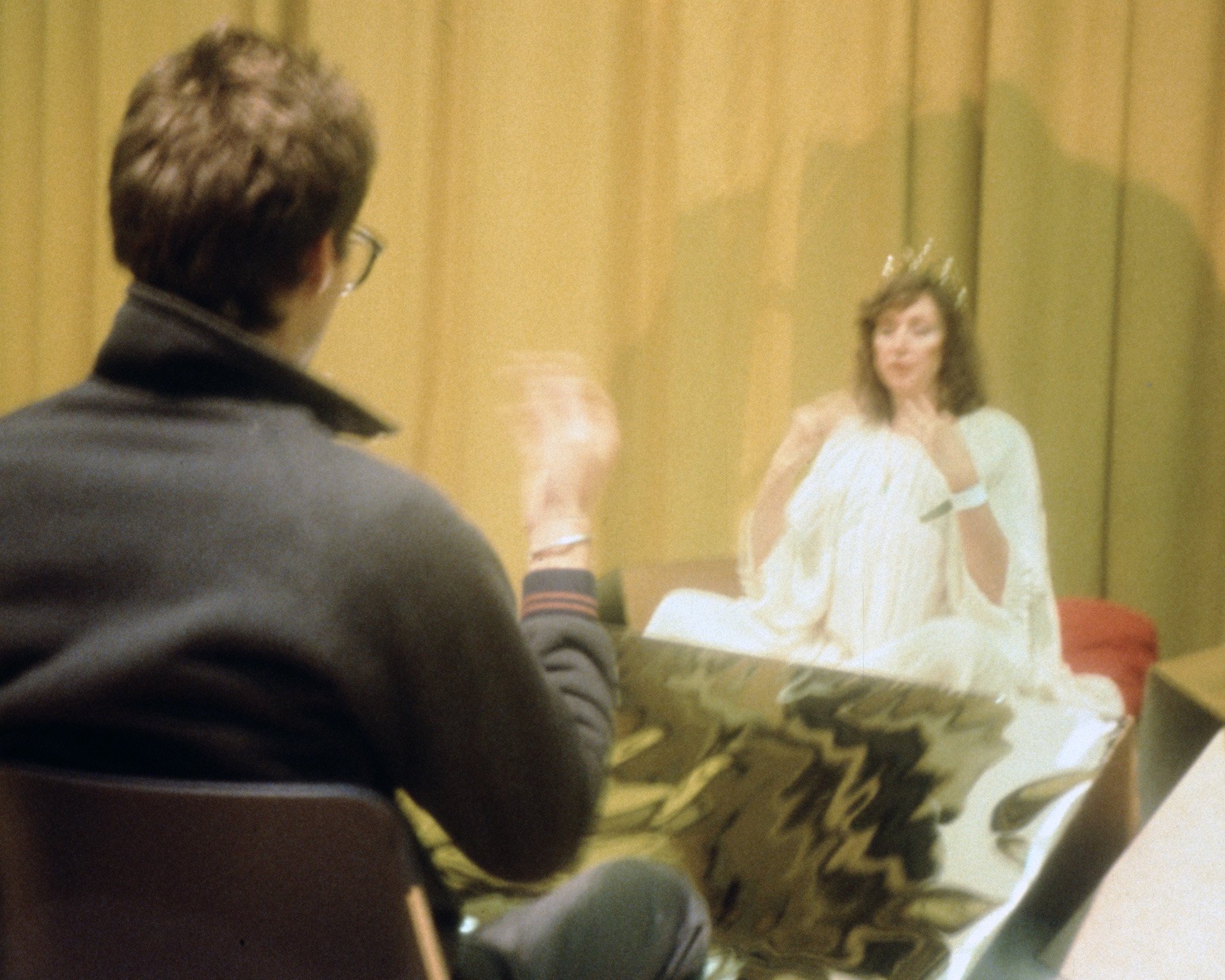
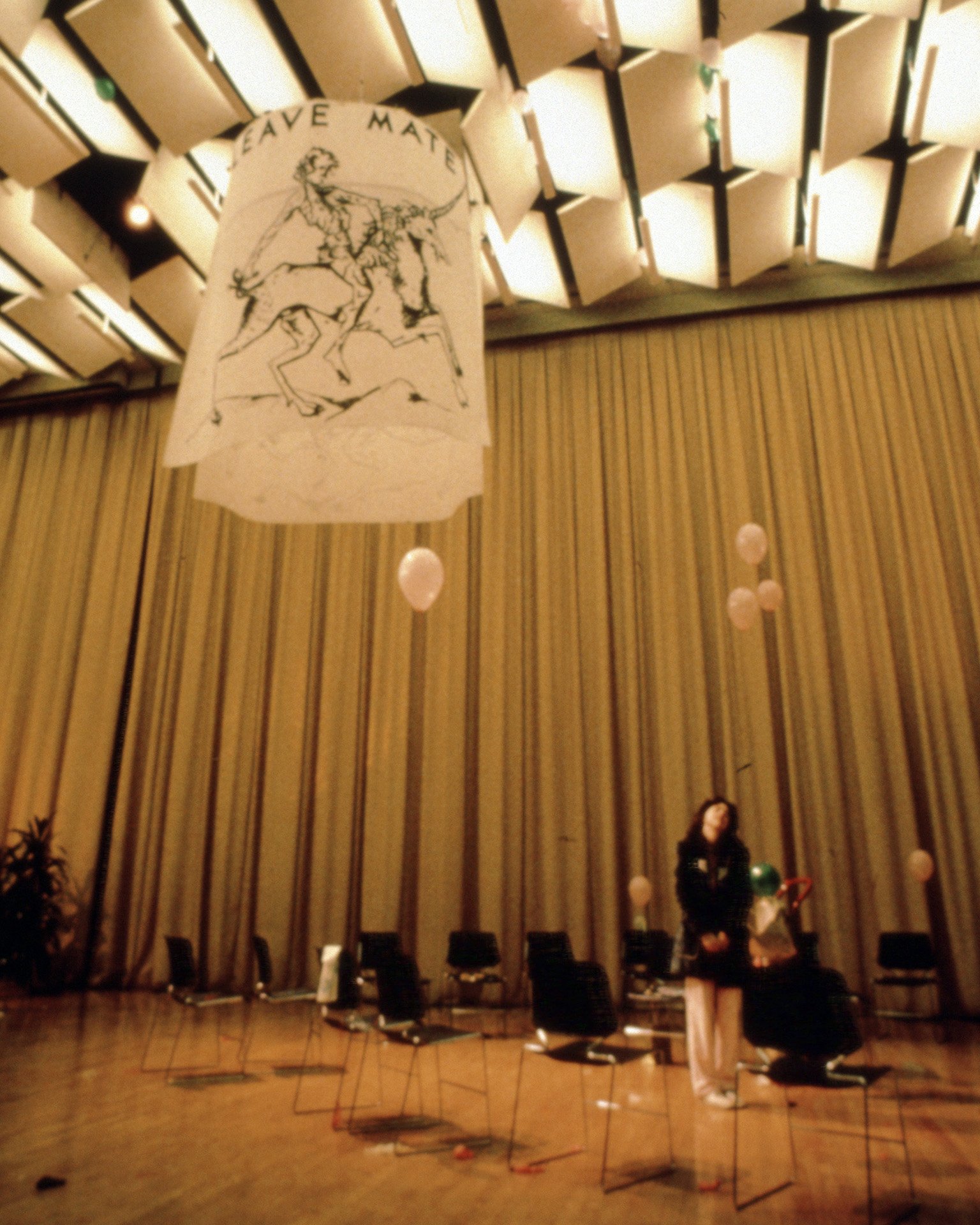
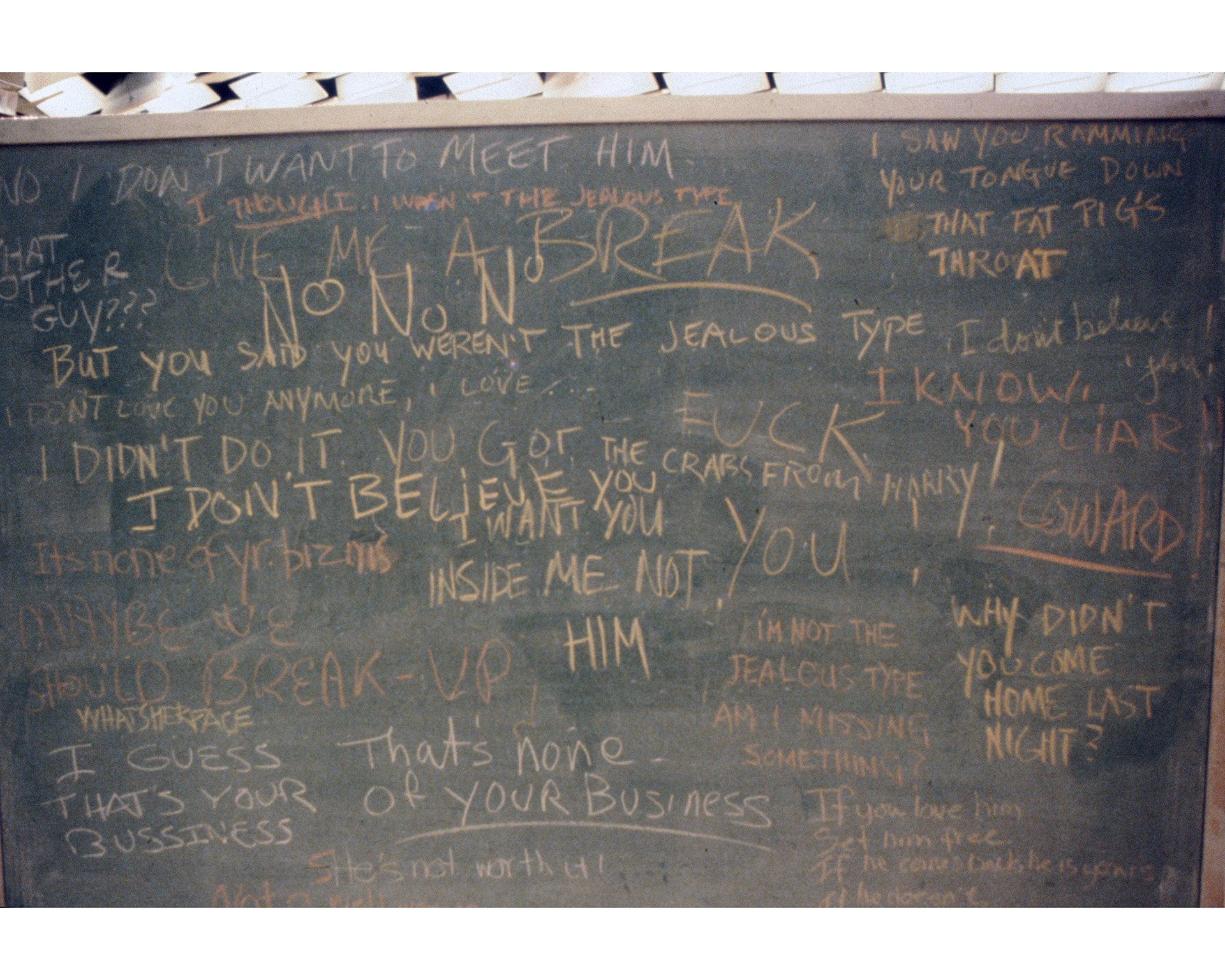
The exhibition also included I Never Get Jealous, an interactive installation by artist and hyperfiction author Judy Malloy, and pieces by dancer Carolyn North, Tom Patrick, and Helen Holt.
Rapoport’s piece offered participants the opportunity to “ceremoniously act out how they have coped with an intense experience of sexual jealousy,” asking them to fill out a form that directed them to “six interactive sites that represent popular ways of coping.”
These ritualistic sites included Thinking and Processing, where viewers tore sheets into strips; Silence, where viewers wrote words on cookies and then literally ate their words; Verbal/Words/Discussion where viewers wrote on a blackboard and arranged large letters on tables; Acceptance where viewers were lead in a mediation in front of a mirror; Leave Mate, where viewers filled and released helium balloons; Revenge, where viewers took care of or beat up inflatable dolls and lips. Each of these coping mechanisms was represented by an oversize banner with an archetypical form appropriated from Jungian psychoanalytic theory.
Rapoport returned to this project in 1993 and 94, creating Sexual Jealousy: The Shadow of Love, a software publication and computer-assisted interactive installation that offered viewers a structure similar to the 1984 performance, one that made use of Jungian symbols, images appropriated from Aubrey Beardsley, Indonesian wayang puppets, footprint wayfinding icons, and video clips taken from daytime TV soap operas. The title refers to the observation that the way that you express jealousy towards a person reflects, or "shadows", the reasons which originally attracted you to that person.
Presented as a parody of a self-help product at FISEA, Minneapolis, 1994, this software package took the form of a Hypercard Stack, and was a collaboration between Rapoport, Pines, graphic designer Marie-José Sat (co-creator of Web Art work Brutal Myths, 1996), and programmer Ed Payne. It was presented with an interactive multi-channel computer music installation by composer Michael McNabb, a generative, algorithmic composition evocative of Javanese court gamelan.
Rapoport made video and audio recordings of the 1984 event, most of which have yet to be released.
Unfortunately, the Hypercard Stack software is not currently available.
